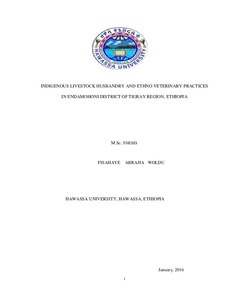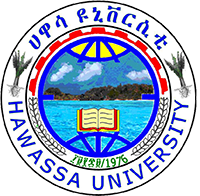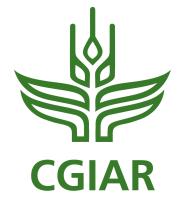Resource information
Indigenous knowledge is local knowledge that exists and buildup through experiences of the local community in the day-to-day practice and it is economically inexpensive. Farmers use their indigenous knowledge from time immemorial till today, thus it gives a good solution for their problems. However, this knowledge is not well studied, analyzed and documented to be used as a basis for farming system development. Therefore, this study was conducted with the objectives of identifying and documenting farmers’ indigenous knowledge in livestock husbandry, and ethno veterinary practices in Endamohoni district of southern Tigray. The woreda was purposively selected based on its contrasting agro-ecologies (lowland, midland, and highland) and potential of being the source of traditionally knowledgeable peoples who for generations have been associated with livestock rearing. Six kebeles (two kebeles from each of the three agroecologies) were selected as study sites. A total of 175 households (55 from lowland, 60 each from midland and highland), assumed to have a better indigenous knowledge in livestock production were selected for the study. A structured questionnaire was administered to the selected households to collect data on use of indigenous knowledge on livestock husbandry and ethno veterinary practices. After completing the questionnaires for each division, group discussions have been held and an informal meeting with the key informants for triangulation. Result indicated that 88.3, 76.7 and 92.7 % of the respondents in highland, midland and lowland agroecologies respectively were males. The level of education shows that of all the respondents, 55% in highland, 50% in midland and 72.73% in lowland were illiterate. Sheep and cattle in highlands and midlands and goat and cattle in lowland dominated the livestock populations. Shortage of feed in the study areas was ranked as the first constraints of animal production. Farmers use purchasing of crop residue in the highland and midland, destocking in the midland and movement (urna) in the lowland as mitigation mechanisms. Phenotypic selections of different animal species are employed and also keeping history of pedigree is important instrument in the breeding and selection of animals. Breeding of close related livestock is discouraged in the study sites. Seventeen animal diseases and38 aliments were recorded in the study areas and 65 medicinal plants were accordingly documented to treat those diseases. About 83% of the highland, 75 % of the midland and 92.7% of the lowland farmers acquire ethno veterinary knowledge from their old parents. Of the total medicinal plants, (81 %) were wild. In the preparation of the traditional medicine leaves constitute about 51% and 47 % of the medicine was administered orally. The most common preparation method is by crushing and squeezing (45 %). Farmers are aware of toxicity and provide antioxidants. Farmers used herbals (plants) in dairy utensils cleaning, fumigation, milk processing and preservation. These knowledge and practices of livestock husbandry, animal health and product handling and processing should serve as the basis to develop further interventions to improve livestock productivity in the area. As most of the medicinal plants are grown in wild, it is very important to promote conservation in ex-situ and in-situ. And further biological studies should be conducted on the reported medicinal plant species of the study area so as to utilize them in drug development.



